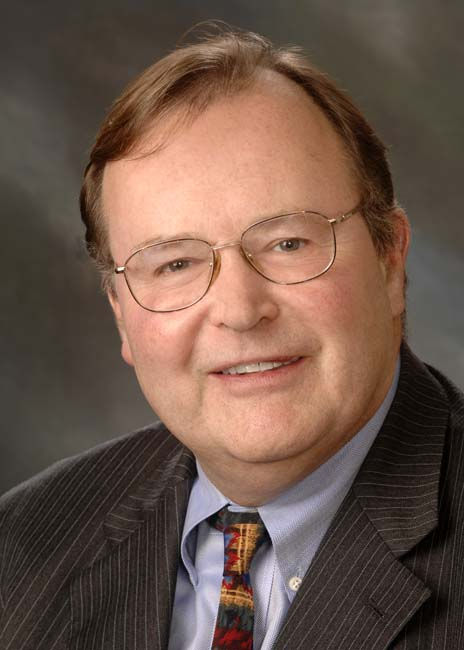
David Cowles
Jul 15, 2023
“…The spacetime world of matter and energy, 14 billion years old and almost 100 billion light years across, is not the final word.”
The sacrament known as Eucharist is the cornerstone of Roman Catholic (RC) spirituality. The accompanying theology maintains that in Eucharist Jesus Christ is substantially ‘present’ under the accidental appearance of bread and wine.
Further, RC Eucharistic Theology holds that the consecration of bread and wine (the specie) during a proper liturgy actually changes that substance of that species into the Body and Blood of Christ. Appropriately, Catholics refer to this process as transubstantiation.
Much of RC Theology can be (and has been?) dumbed-down and/or sugar-coated to be more appealing to our modern intellectual tastes…but not Eucharist! Here, there is no wiggle room. Believe me, we’ve tried everything over the past 2,000 years – but to no avail. Eucharist does not symbolize or signify Jesus’ body and blood; it is Jesus’ body and blood.
Nor are we saying that Jesus’ body and blood co-exists with the bread and wine; it doesn’t! Substantially speaking, after consecration, there is no more bread or wine. There is the appearance of bread and wine but not the substance.
Nor are we saying that Jesus is only ‘provisionally present’ in Eucharist. His presence is not dependent on the moral virtue of the celebrant nor on the faith of the congregation or of the individual communicant…nor on the grape or vintage of the wine. Hints of leather and tobacco are strictly optional!
Nor are we saying that Jesus is only ‘partially present’. On the contrary, RC Theology states clearly that Jesus Christ, body and soul, humanity and divinity, is present in the consecrated species. See what I mean? No wiggle room!
I’m holding a baseball in my hands. It’s a baseball! It doesn’t matter who made it or what that person’s state of mind was at the time; it doesn’t matter whether I enjoy baseball or even understand its rules. Being a baseball does not depend on context; it’s a matter of substance.
Of course, there is one difference: the baseball not only is a baseball, it appears to be a baseball as well. Not so Eucharist! It is the body and blood of Christ, but it appears to be bread and wine.
Needless to say, few non-Christians share this belief. In fact, most non-Catholic Christians hold a different view of the Sacrament. It is only slightly more surprising (Pew, 2019) that a majority of self-identified ‘Roman Catholics’, and even some practicing Roman Catholics, do not accept the Church’s teaching on this matter.
No real surprise here. Frankly, the wonder is that anyone accepts such a bizarre doctrine as this. Today, we share an understanding of physics, chemistry and biology that would seem to rule out anything even remotely resembling transubstantiation.
But that is precisely the point! Transubstantiation is incompatible, superficially at least, with ‘the hard sciences’. Modern science has given us a compelling model of the physical world, and we have no quarrel with that. However, what science has modeled is, obviously, the world of appearances, attributes, qualities, accidents – Kant’s phenomena - not the world of substance, his noumena.
In the Beatles’ iconic movie (1967), Yellow Submarine, Jeremey Hillary Boob famously instructs the Fab Four, “Be empirical, look!” Exactly! And when we do, we see the accidents, bread and wine; we don’t see anything that we would recognize as body or blood, thank God!
In this respect, Eucharist is a symbol, not of Jesus, but of Universe. To be clear, Eucharist is the body and blood of Christ, but it is also symbolic of Universe. How so?
Eucharistic Theology suggests that the spacetime world of matter and energy, 14 billion years old and almost 100 billion light years across, is not the final word. There is something more fundamental. Christians believe that ‘something more fundamental’ is God.
The world we live in appears to be continuous, flat and inert. We do not need complicated mathematics to plot a trip from Boston to Cleveland; a simple road map, unfolded on the passenger seat, will do just fine.
We can ignore contributions to our trajectory from relativity, quantum mechanics and the earth’s curvature. Likewise, modern science has given us a map of Universe that allows us to accomplish just about anything we want…except to understand that universe.
Hasidic Rebbe Schneerson spoke of “…the concept of oneness within the microcosm of the human being—which serves as an analogy and example of the true oneness of the macro-cosmos.” He concluded, “All that exists is spiritual. Yet further, everything is divine.”
According to modern cosmology, the foundation of the material world is a ‘void’; according to Rebbe Schneerson, it is a ‘person’, aka God. We see the personhood of Universe reflected in the ‘souls’ of things that exist in that universe.
According to the Rebbe Yitzchak Luria, even a rock has a soul as evidenced by its self-identification, by its cohesion, and by its discontinuity with the environment. Rabbi Schneur Zalman, founder of the Chabad school, wrote that a rock must have a soul (persona) because it exists.
Being is an activity. “I seem to be a verb” (R. Buckminster Fuller). Using Eucharistic terminology, Universe is accidentally space and time, matter and energy, but it exists; so substantially, it is the mind (or will) of God.

David Cowles is the founder and editor-in-chief of Aletheia Today Magazine. He lives with his family in Massachusetts where he studies and writes about philosophy, science, theology, and scripture. He can be reached at david@aletheiatoday.com.
Return to our Beach Read 2023 Table of Contents



